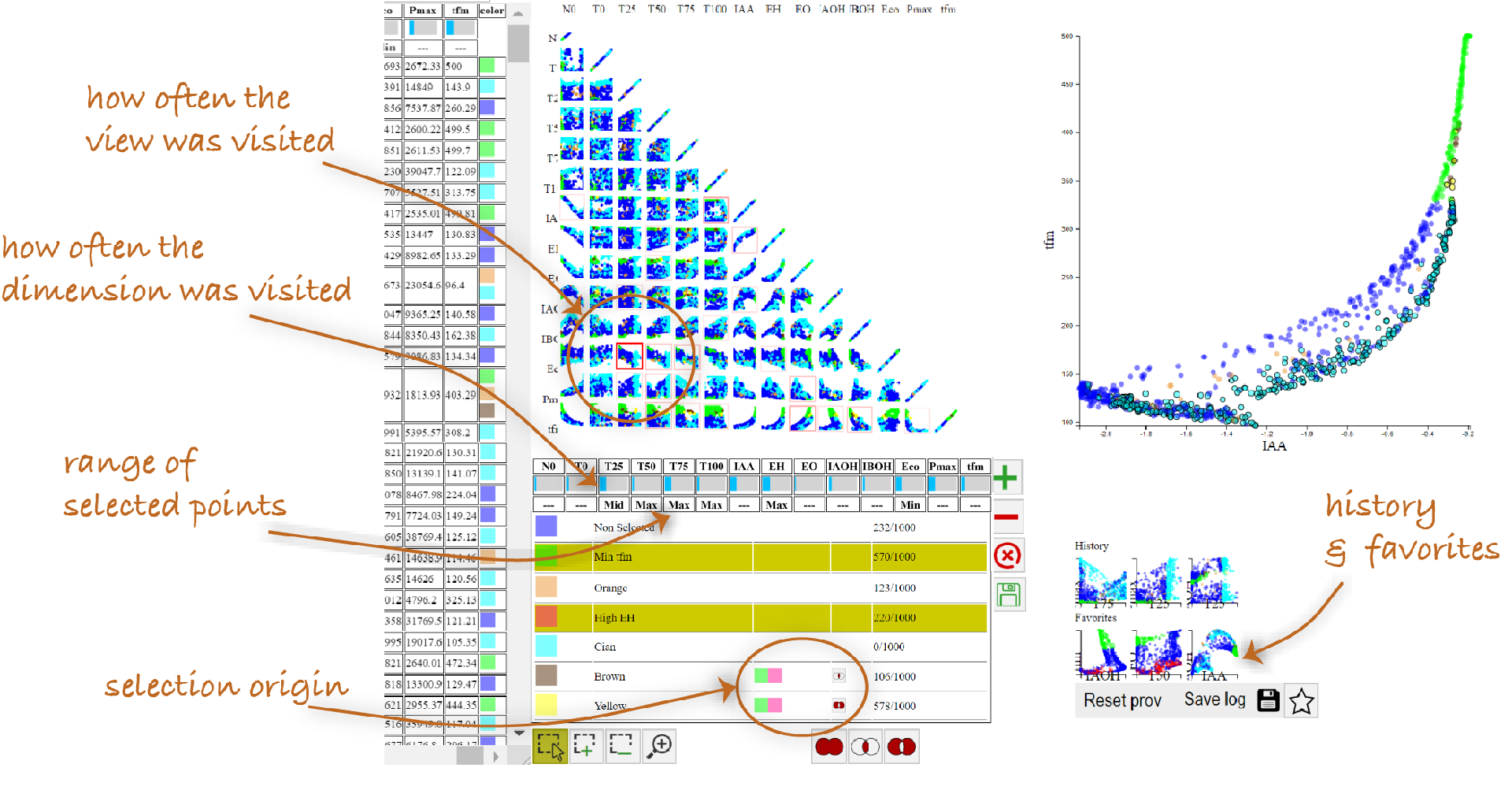Understanding How In-Visualization Provenance Can Support Trade-off Analysis
Mehdi Chakhchoukh, Nadia Boukhelifa, Anastasia Bezerianos
View presentation:2022-10-20T20:57:00ZGMT-0600Change your timezone on the schedule page
2022-10-20T20:57:00Z

Prerecorded Talk
The live footage of the talk, including the Q&A, can be viewed on the session page, Provenance and Guidance.
Fast forward
Keywords
Provenance, visualization, trade-offs, multi-criteria, decision making, qualitative study
Abstract
In domains such as agronomy or manufacturing, experts need to consider trade-offs when making decisions that involve several, often competing, objectives. Such analysis is complex and may be conducted over long periods of time, making it hard to revisit.In this paper, we consider the use of analytic provenance mechanisms to aid experts recall and keep track of trade-off analysis. Weimplemented VisProm, a web-based trade-off analysis system, that incorporates in-visualization provenance views, designed to helpexperts keep track of trade-offs and their objectives. We used VisProm as a technology probe to understand user needs and explore thepotential role of provenance in this context. Through observation sessions with three groups of experts analyzing their own data, we makethe following contributions. We first, identify eight high-level tasks that experts engaged in during trade-off analysis, such as locating andcharacterizing interest zones in the trade-off space, and show how these tasks can be supported by provenance visualization. Second,we refine findings from previous work on provenance purposes such as recall and reproduce, by identifying specific objects of thesepurposes related to trade-off analysis, such as interest zones, and exploration structure (e.g., exploration of alternatives and branches).Third, we discuss insights on how the identified provenance objects and our designs support these trade-off analysis tasks, both whenrevisiting past analysis and while actively exploring. And finally, we identify new opportunities for provenance-driven trade-off analysis, forexample related to monitoring the coverage of the trade-off space, and tracking alternative trade-off scenario.